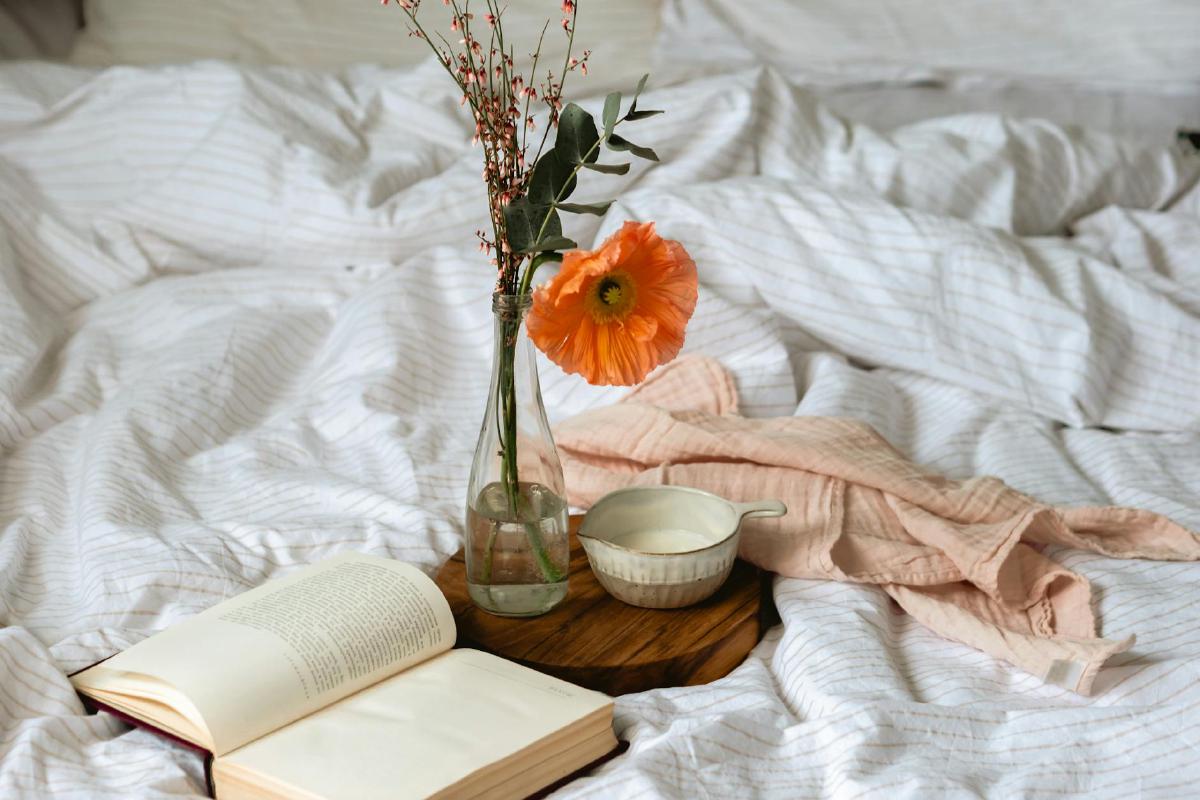Overview
Use botanical patterns, soft fibers, and gentle routines to create a calmer home with plant‑inspired textiles. Start small, layer thoughtfully, and let texture and light do the work.
Why Botanical Textiles Calm a Room
Plant-inspired textiles echo the gentle curves and layered rhythms we see outside—leaf repeats, soft greens, and earthy neutrals that lower visual noise. Natural fibers also bring tactile grounding: the cool hand of linen, the soft nap of washed cotton, the quiet hush of a wool rug.
When patterns and textures pull from nature, light feels softer, edges feel kinder, and the room reads as a place to exhale.
Choose Patterns That Breathe
For calm, favor low- to medium-contrast motifs (ferns, grasses, eucalyptus sprigs) over bold, high-contrast prints. In smaller rooms, pick finer repeats; in larger spaces, a larger leaf or palm motif can anchor a wall of curtains or a rug without overwhelming.
Select matte finishes and natural or recycled fibers—cotton, linen, hemp, wool, or Tencel—for breathability and a softer glow. If you love color, keep the palette restrained: layered greens, warm taupe, clay, and soft cream tend to relax the eye.
Place Textiles Where Eyes and Hands Land
Curtains: Sheer botanical panels diffuse glare into a gentle wash. Hang them high and just kissing the floor to elongate the room without dragging in dust.
Pillows and throws: A fern-pattern cushion on a neutral sofa or a moss-green throw at the foot of the bed creates a calm focal point you can touch. Rugs: A leaf‑textured flatweave softens footsteps and reduces echo, especially in hard‑floored rooms. Bedding and bath: Leaf‑print duvet covers or a eucalyptus shower curtain can bring the same serenity to private spaces without clutter.
Layer With Light and a Few Live Plants
Let textiles and light work together. Sheer prints in front of a bright window will cast gentle shadows that move through the day; in dim rooms, add a warm‑temperature lamp (2700–3000K) so patterns read softly at night.
If you want living accents, place one or two easy plants near your textile moments to deepen the biophilic feel—far enough from drapes to avoid damp fabric and allow airflow.
Optional Plant Companions (With Quick Care Notes)
Boston fern (Nephrolepis exaltata): Non‑toxic to cats and dogs. Likes bright, indirect light and consistently moist soil; never let it fully dry. Use a rich, peat‑free, well‑draining mix. Divide in spring to propagate. Growth slows in winter; ease off fertilizer and keep humidity steady.
Parlor palm (Chamaedorea elegans): Non‑toxic to pets. Tolerates low to bright indirect light. Water when the top 2–3 cm (about 1 in) of soil dries; use a loose, peat‑free potting mix. Propagation is by seed; division damages roots. Slower growth in cooler months—reduce watering frequency.
Chinese money plant (Pilea peperomioides): Non‑toxic to pets. Prefers bright, indirect light. Water when the top half of the soil dries. Use a well‑draining mix with perlite. Propagate by potting up offshoots. Rotate weekly for even growth; in winter, water less as light drops.
Daily and Weekly Routines That Keep Calm Going
Morning: Open curtains and smooth a throw with one slow breath in and one out—let the fabric’s texture cue a reset. Evening: Fluff one cushion and fold one blanket; small finishes signal closure to the day.
Weekly: Shake out throws outside, vacuum rugs with a gentle setting, and rotate pillow covers if you keep a small stash. Take a two‑minute noticing break: trace a leaf repeat with your eyes and name three colors you see.
Simple Kit to Get Started
Keep a short list so momentum stays easy: a measuring tape and notebook for window and pillow sizes; fabric swatches or saved screenshots to compare tones in your light; a basic curtain rod with secure anchors; no‑sew hem tape or a simple sewing kit; a gentle, fragrance‑free detergent; a lint roller; non‑slip rug pad; a small watering can and a saucer set if you’re adding plants; an LED bulb in warm white (2700–3000K) to flatter greens; and breathable storage bags for off‑season textiles.
Seasonal Refresh Without Fuss
Spring–summer: Swap in lighter linens and finer repeats; lift the palette with sage and silvery eucalyptus tones. Autumn–winter: Bring in weight—cotton sateen or wool blends, deeper greens, and mossy solids that layer with a single leaf print for calm depth.
When storing, wash and fully dry textiles, then pack in breathable cotton bags with a cedar block. Label clearly so swaps take minutes, not hours.
Care and Safety Notes
Keep fabrics clear of heaters, radiators, and candles; choose flame‑retardant liners for curtains near heat sources. Secure curtain rods into studs or with proper anchors, and shorten cords or use breakaway devices to protect children and pets. Pair rugs with non‑slip pads to prevent trips.
If you use a humidifier for plants, place it on a tray away from textiles to prevent damp spots and mildew; clean it weekly per the manual. Wash new textiles before first use to reduce residual dyes; choose low‑VOC products when possible. When handling potting mix, open bags outdoors or wear a mask if dusty, and wash hands after repotting.
Start Small, Feel the Shift
Begin with one pillow cover or a single panel of botanical fabric, then pause for a week and notice how the room feels in morning light. Calm grows from modest, repeatable choices—not big overhauls—so let each change earn its place.
Notes
- Check how colors read in your actual light—daylight, evening lamps, and overcast days can shift greens and neutrals.
- Patch‑test stain removers on an inside seam before full cleaning.
- Vacuum textiles and rugs regularly to reduce dust; consider a HEPA filter if you’re sensitive.
- Use saucers under plant pots to protect rugs and curtains; empty standing water promptly.
- If you keep pets, monitor for chewing; even non‑toxic plants and loose fibers can cause upset stomachs.
- Progress over perfection: one calm corner changes the way a whole room is used.
